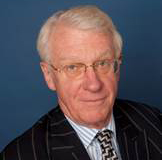Euro Trash: The Euro Goes Toxic
The March 21, 2005 news item that the "EU member states have agreed to relax constraints their budgets are subject to under the Stability and Growth Pact which underpins the euro" contains the most positive news for gold in the past two years. Prominent European politicians celebrated the development, although not on behalf of gold. Hans Eichel, German Finance Minister crowed: "looser rules make economic sense because they free up public spending that can trigger economic growth." He reassured, perhaps especially for those investors who have used the euro as a proxy for gold, that "the Stability Pact is not dead." Not to be outdone, French Finance Minister Thierry Breton chimed in: "the stability pact was now political and economical and no longer technocratic." In other words, the euro is just like the dollar.
We have long believed that the euro is more deeply flawed than the US dollar. It was only a question of when the market perceptions would reflect reality. As noted recently by James Grant of Grant's Interest Rate Observer: "The soundness of a central bank varies inversely with the breadth of its mandate… Since the ECB has one charge---price stability---it must be reckoned a better bet to succeed than the multi-tasking Fed". Too bad this excellent article went to press on February 25th. The ink was barely dry on Grant's litany of reasons to doubt the credibility of the euro, when the Europeans proved the point. Political exigencies (unemployment, stagnant GDP) prevailed on European technocrats to "loosen the rules", effectively rewriting the mandate for the euro to include "economic growth" along with price stability.
Only time will tell when market perceptions will catch up with reality. However, a sure signal that they have done so will be when the euro price of an ounce of gold trades convincingly above 350. Since September 2003, the euro and gold have risen 11% and 10% against the trade weighted US dollar respectively. During those six quarters, gold has been nothing more than a proxy for those who were betting on a weak US dollar. This relationship is depicted on the two charts below, one showing the euro vs. gold and the second showing the price of gold in euros. Investors with short memories fail to question the notion that the euro and gold are interchangeable, in total ignorance of financial history.

Source: Baseline

Source: Bloomberg
It is easy to understand why the euro found favor with traders and investors who were bearish on the US dollar. In many ways, the euro is like an unseasoned new issue, with minimal historical baggage to arouse negative or controversial responses when being considered as an investment option. The initial trade for the euro took place in January 1999. In the context of monetary history, investor experience with the euro can be measured in a few nanoseconds. On the other hand, gold has been around since prehistory. A monetary expert without a strong (and probably negative view) on gold seems inconceivable. A second and equally important explanation for the euro's popularity with traders is its liquidity relative to gold. The money supply of euros, according to the European Central Bank is 6.6 trillion euros (M3 as of 1/05), equivalent at current exchange rates to $8.6 trillion. On the other hand, the monetary supply of gold, assuming all central bank gold is for sale (which of course it isn't at any given moment), is around $1 trillion. Removing central bank gold from the equation leaves a residue of monetary gold of approximately half this amount, a fraction of the euro money supply. It is little wonder that capital fleeing the US dollar gravitated to the more easily acquired and liquid alternative.
Notwithstanding its flaws, we can understand why the euro might trade higher against the US dollar in the months to come. Asian central banks, which have acquired massive dollar positions, have been muttering about diversification. Public musings by the South Korean central bank on February 22nd of this year suggesting diversification into Australian and Canadian dollars triggered a mini tailspin in the US dollar, which was arrested only when the Koreans softened their language. However, with dollar reserves of 30% for Korea, 40% for China, 60% for Malaysia and 70% for Taiwan relative to their domestic GDP, versus historical norms in the single digits, it is clear that Asian central banks cannot speak openly about their intentions.
A likely side effect of the inevitable central bank migration away from the dollar will be further appreciation of the euro against the dollar. Let us see what European politicians have to say when one euro buys 1.40 or 1.50 US dollars. Their attempts to explain how further deviations from the Stability Pact and market interventions will not undermine the value of their beloved euro should make for highly entertaining comedy.
It is against such a backdrop that the euro price of gold should surpass the trading range of the past two years. A breakout in euros will serve notice to the market that gold is not a subset of the weak dollar play. Once it has crossed this threshold, gold will begin to attract capital from assets parked in all currencies and asset classes including commodities and high yield credits, the two most recent investment bubbles. The bull market in gold, which commenced in August of 1999, will shed its stealth mode. Its pace will quicken and become difficult to ignore. We stand at the end of the beginning of the first leg in a multi year bull market in the metal. The significant accumulation that has occurred during the past five years will not yield easily to the sharply higher prices that lie ahead, because those price gains will be spurred by financial market developments that make gold's appeal quite obvious, even to its detractors.






 John Hathaway, CFA, Senior Managing Director, Co-Portfolio Manager
John Hathaway, CFA, Senior Managing Director, Co-Portfolio Manager










